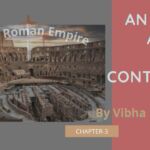Checkout handpicked notes of NCERT class 12th History Chapter 13 Mahatma Gandhi and the Nationalist Movement Civil Disobedience and Beyond notes by Vibha Madam and don’t forget to share your valuable comments in the comment below to motivate our author.
Mahatma Gandhi and the Nationalist Movement by Vibha Maam
A single individual is often identified with the making of a nation like Garibaldi (Italy), George Washington (America), Ho Chi Minh (Vietnam), Mahatma Gandhi (India’s father of nation).
Gandhiji was the most influential, revered and respected of all the leaders of the freedom struggle. Gandhi’s political career was shaped by society.
A Leader announces himself
- In Jan 1915, Gandhiji (Mohandas Karamchand Gandhi) returned to India after 20 years spent in South Africa. Chandran Devnesan remarked that “South Africa was the making of the Mahatma Gandhi “as he started non-violent protest (Satyagraha) to promote harmony between religions and castes in South Africa.
- When Gandhiji came back to India, it was different from the one that he had left in 1893. Although still a colony of the British, it was far more active in a political sense.
The INC now had branches in major cities and towns.
- The Swadeshi movement of (1905-07)had thrown up some towering leaders. Among them were Bal Gangadhar Tilak (Maharashtra), Bipin Chandra pal (Bengal), Lala Lajpat Rai (Punjab). They were known as Lal Bal pal. They were radicals and advocated militant opposition to colonial rule.
- There was a single group of “moderates” who preferred a more gradual and persuasive approach.
- Gandhiji, Gopal Krishna Gokhale (the political mentor of Gandhiji), Muhammad Ali Jinnah (Gujarati lawyer, trained in London) were known as moderates.
- Gokhale advised Gandhi to tour the whole of India to understand the plight of Indians. His first major public appearance was at the opening of the Banaras Hindu University( BHU).
In 1916, BHU was founded jointly by Pt. Madan Mohan Malviya, Annie Besant, Sundarlal, Prabhu Narayan Singh. He was invited on account of his work in South Africa.
- Gandhiji was concerned about poor labouring in his speech and he said “India would get salvation only through the farmers”.
- The opening of the BHU was an occasion for celebration because it was Nationalist University sustained by Indian money and Indian initiative.
- In December 1916, the annual congress session held in Lucknow, Gandhiji got an opportunity to put his principles into practice when he was informed of the plight of the Indigo planters in Champaran (Bihar).
The Making and Unmaking of Non-Cooperation
- Gandhiji started his first non-cooperation Satyagraha in 1917 Champaran (Bihar), against the oppressive plantation system and freedom to cultivate the crops of their choice. Second, In 1918 in Kheda (Gujarat) demanding relaxation in revenue collection following the crop failure and third, in the same year 1918 in Ahmedabad in support of cotton mill workers for their better working condition.
- Their initiatives in Champaran, Ahmedabad, Kheda marked Gandhiji out as a nationalist and philanthropist.
- During the first world war(1914-18), the British had instituted censorship of the press.
- On the recommendation of the committee, (chaired by Sir Sydney Rowlatt), the Rowlatt Act passed by the imperial legislative council despite opposition from Indian members, by which the British government got power to detain political prisoners without trial.
- Gandhiji called for a country-wide hartal against the Rowlatt Act.
- In response to the ‘bandh’ shops and workshops shut down and the school, colleges closed in towns across North and West India.
- Gandhiji and prominent local congressmen were arrested in Punjab. In April 1919, British Brigadier ordered his troops to fire on a Nationalist meeting. More than 400 people were killed in this Jallianwala Bagh massacre.
- Rowlatt Satyagraha made Gandhi ji a truly national leader.
- Gandhiji called for a campaign of “non cooperation” with British rule.
- Indians asked to stop attending schools, colleges, Law courts, not paid taxes and asked to adhere to a renunciation of all voluntary association with the British. Gandhiji assured “if non-cooperation was effectively carried out, India would win Swaraj within a year.
Knitting a Popular Movement
- Gandhiji intended to unite people, especially Hindu and Muslims for a wider movement across India. he had joined hands with the Khilafat movement who had been struggling to restore the Caliphate, which was abolished by Turkish ruler Kemal Ataturk.
- Gandhiji hoped that an alliance of non-cooperation and khilafat could bring an end to colonial rule.
- Muhammad Ali and Shaukat Ali associated with Khilafat movement (1919-1920).
- Students left government schools and colleges, lawyers refused to attend courts, workers went on strike, farmers refused to pay taxes, hill tribes violated forest laws, Kumaun peasants refused to carry loads for colonial officials.
- These protest movements were sometimes carried out in defiance of the local Nationalist leadership. Peasants, workers and others interpreted and acted with their interest upon the call to non-corporate with the colonial rule.
- Non- cooperation was negative enough to be peaceful but positive enough to be effective.It entailed denial, renunciation and self-discipline. It was training for self- rule.
- The British raj was shaken to its foundation for the first time by a non-cooperation movement after the revolt of 1857. Gandhiji withdrew NCM( non-cooperation movement) as it turned violent after the incident of Chauri Chaura in Feb1922, where several constables perished in the conflagration.
- During the non cooperation movement thousands of Indians were put in jail. Gandhiji himself was arrested in March 1922 and charged with sedition.
A People’s Leader
- Many thousands of peasants, workers and artisans participated in the NCM.
- Many of them refer to Gandhiji as ‘Mahatma’ because of his ‘simple living and high thinking’ perception and ascetic lifestyle.
- Gandhiji went among the people in a simple dhoti and spent a part of each day working on the charkha.
- The act of spinning allowed Gandhiji to break the boundaries of the traditional caste system that prevailed in the society.
- Mahatma Gandhi was a caste wise merchant and by profession he was a lawyer but his simple lifestyle and love of working with his hands allowed him to empathize.
- Wherever Gandhiji went, rumours spread of his miraculous powers. in some places it was said that he had been sent by the king to redress the grievances of the farmers and that he had the power to overrule all local officials.
- Gandhiji appeared to the Indian peasants as a ‘saviour’ who would rescue them from high taxes and oppressive officials and restore dignity and autonomy of their lives.
- New branches of the Congress were set up in various parts of India. The provincial committees of Congress were based on linguistic regions and mother tongues were used for the Nationalist messages or communication. A series of ‘Praja Mandals’ were established to promote the nationalist creed in the princely states.
- By now, among the supporters of the Congress were some very prosperous businessmen and industrialists like GD Birla.
Between 1917 and 1922 a group of highly talented Indians attached themselves to Gandhiji. They include Mahadev Desai, Vallabhbhai Patel, JB Kripalani, Subhash Chandra Bose, Abul Kalam Azad, Jawaharlal Nehru, Sarojini Naidu, Govind Ballabh Pant and C Rajagopalachari. They were from different regions as well as different religions.
Gandhiji was as much a social reformer as he was a politician. When Mahatma Gandhi was released from prison in Feb 1924, he chose to work for promotion of khadi (homespun cloth) and the attention of untouchability. He emphasized on Hindu Muslim harmony and self-reliance. He stressed the significance of wearing khadi and boycotting millmade cloth.











very easy and simple language notes
great